T cell immunity is a key component of the adaptive immune response against pathogens and virus-infected cells.
The two main types of effector T cells are helper T cells and cytotoxic T cells. Helper T cells function as immune coordinators and secrete cytokines to activate other immune cells (such as macrophages, B cells, and cytotoxic T cells). Cytotoxic T cells release cytotoxic granules to directly destroy infected cells and pathogens.
Memory T cells are formed from cytotoxic T cells in the aftermath of the adaptive immune response and confer long-term immunity against the pathogen.
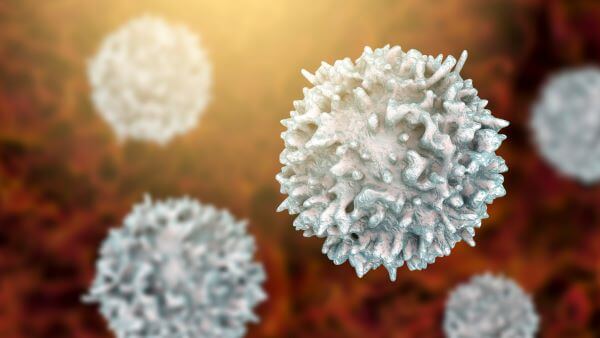
What Are T Cells?
T cells are one of the two main types of lymphocytes (white blood cells) of the adaptive immune system. Like B cells, they originate in the bone marrow but, unlike B cells, they mature in the thymus. There are two main types of effector T cells, and these are helper T cells and cytotoxic T cells. In the event of infection, T cells work with one another and other immune components to launch a targeted response against the pathogen.
Activation of T Cells
T cells originate from stem cells in the bone marrow and mature in the thymus. Until they encounter their specific antigen, they are called naïve T cells.
T cells are specific to just one type of antigen, but they are not activated by the antigen directly. Antigen-presenting cells (APCs) such as macrophages, dendritic cells, and T cells, mediate the activation of T cells by engulfing invading pathogens. Once engulfed, the pathogen is digested into protein fragments, and some of these are displayed on the surface of the APC as part of their major histocompatibility complex (MPC).
The APCs then make their way to the thymus, where they present the antigens on their surface to naïve T cells. When a T cell recognizes the antigen, it will bind to the APC via the MHC receptor.
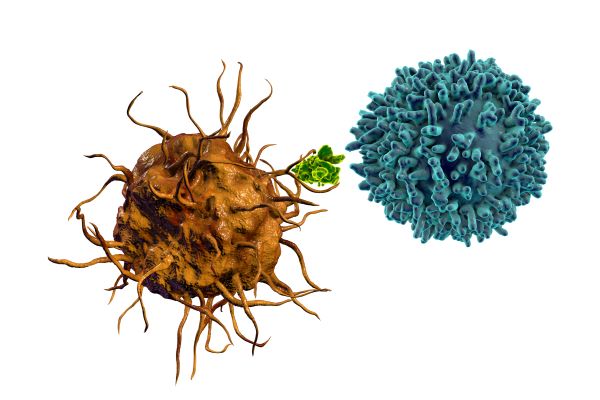
Types of T Cells
The two main types of T cells are helper T cells and cytotoxic T cells (AKA ‘killer’ T cells). Both types of lymphocytes originate in the bone marrow and mature in the thymus, but they express different types of co-receptors on their surface.
All T cells express a T cell receptor (TCR) and either a CD4 or a CD8 co-receptor. Helper T cells express CD4 receptors, and cytotoxic T cells express CD8 receptors. For this reason, helper T cells and cytotoxic T cells may also be referred to as CD4+ and CD8+ T cells, respectively.
The type of CD receptor a T cell expresses on its surface determines which type of APC it can bind to. This is because CD4+ receptors bind only to MHC Class II (MHCII) complexes, and CD8+ receptors can only bind to MCHI. This process activates naïve T cells to proliferate and become effector cells; either helper (CD4+) T cells or cytotoxic (CD8+) T cells.
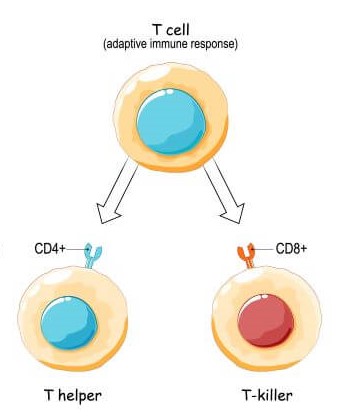
The third type of T cell, memory T cells, and formed in the aftermath of the adaptive immune response. Cytotoxic T cell numbers peak around a week after the initial infection, before declining rapidly in the contraction phase. Any remaining cytotoxic T cells persist in the immune system as memory T cells and confer long-term immunity against the pathogen.
Functions of T Cells
Helper T Cells
Helper T cells play a central role in the adaptive immune response, but they don’t directly attack pathogens. Instead, they secrete cytokines that activate and coordinate other immune cells (such as macrophages, B cells, and cytotoxic T cells) to launch an attack against foreign invaders.
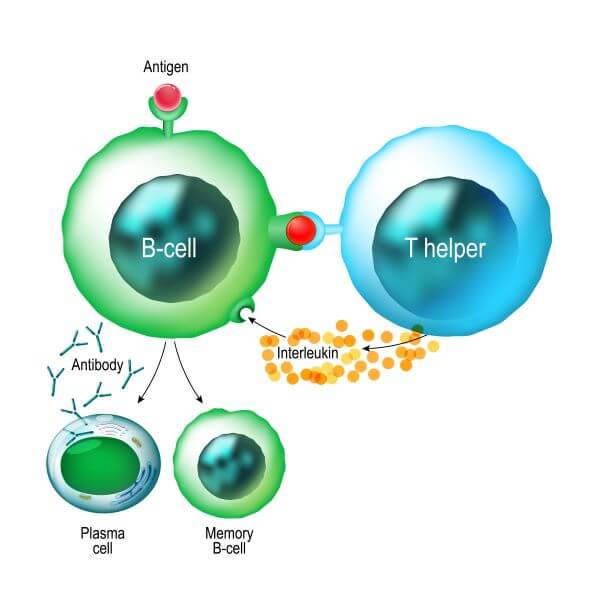
Cytotoxic T Cells
Cytotoxic T cells are also known as ‘killer’ T cells, as they directly attack and destroy pathogens and virus-infected host cells. When they find an abnormal cell, these lymphocytes release cytotoxic granules containing perforin and granzymes, two proteins that work together to destroy the infected cell. Perforin causes pores to develop in the target cell membrane, and granzymes enter the cell through these holes. Once inside, the granzymes trigger apoptosis, killing the host cell and any viruses living inside.
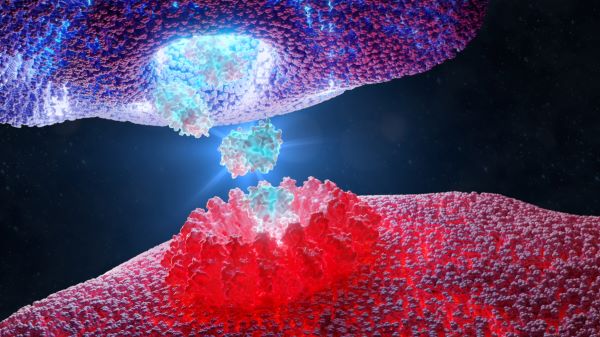
Memory T Cells
Memory T cells are cytotoxic T cells that remain in the body once an infection has been cleared. Once activated, cytotoxic T cells will proliferate rapidly and migrate to the infected part of the body. The number of cytotoxic T cells typically peaks around 7 days after the initial infection, after which it rapidly declines in a mass die-off known as the contraction phase.
Any cytotoxic T cells that survive the contraction phase stay in the body long-term as memory T cells. They ‘remember’ the pathogen, and will quickly respond in the event of re-infection.
